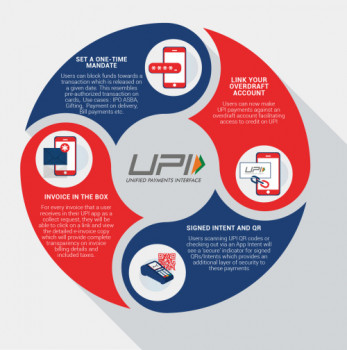UPI 2.0 Upgraded Version of National Payments Corporation of India (NPCI)
Numerous new capabilities have been added to the Unified Payment Interface. Urjit Patel, Governor of the Reserve Bank of India (RBI), officially introduced UPI 2.0 in front of a select group of bankers and NPCI members.
Customers can connect their overdraft (OD) account to UPI 2.0. Customers could only link their saving and current accounts to the payment interface with the first iteration of UPI. Transfers of payment can be scheduled at a later time using the enhanced UPI 2.0. Pre-authorization over the transaction is needed in order for this feature to function.
Customers can now receive invoices from merchants straight in the inbox to verify the authenticity of credentials. It will also enable users validate UPI credentials via a QR code.
Increase Faith between Customer and User
One of the key asks in achieving massive adoption of digital payments is enhancing trust in digital transactions pan-India, both at the end of the payer as well as small merchants. UPI 2.0 aims at addressing concerns by providing more context to the underlying transactions. Most UPI transactions have been payer initiated and focused on person-to-person (P2P) transfers. The ability of merchants to send a digital invoice along with a collect request in UPI 2.0 can help the payer with the purpose of the request and boost collect request side transactions. Another noteworthy feature is related to the quick response (QR) code—the payment instrument which promotes digital payments at micro merchants. There have been instances of frauds in QR transactions in a few global markets where the code is widely adopted. The intent/signed QR feature is aimed at better establishing the authenticity of the payee and thus addressing such concerns and boosting offline merchant payments.
UPI 2.0 Features
1. Linking of overdraft account: Customers can link their overdraft account to UPI in addition to their current and savings accounts. All overdraft account features will be made available to consumers, and customers will be able to transact promptly. An additional digital method for accessing the overdraft account will be UPI 2.0.
2. One-time mandate: If money needs to be transferred immediately, a UPI mandate could be used. The money will be taken out on the day of the actual purchase and given to the retailer or individual user. By making a commitment now, it can be transferred later. can One-time block functionality is built into UPI 2.0 regulations for transactions. Customers have the option to pre-authorize a transaction and pay later. Both businesses and private people can utilise it without any issues.
3. Invoice in the inbox: The purpose of this function, according to NPCI, is to allow customers to review the invoice that the business has sent before making a payment. Customers can inspect the credentials, confirm them, and determine whether the item has come from the correct merchant with its assistance. After confirming the amount and other crucial information listed on the invoice, customers can make a payment.
4. Signed intent and QR: This feature is designed for customers to check the authenticity of merchants while scanning QR or quick response code. It notifies the user with information to ascertain whether the merchant is a verified UPI merchant or not. This provides an additional security. Customers will be informed in case the receiver is not secured by way of notifications, said NPCI.
UPI 2.0 launch date
The National Payments Corporation of India (NPCI), an organisation that serves as the umbrella for all retail payments, will debut UPI 2.0 on August 16 (Monday)2018 during a ceremony in Mumbai.
UPI 2.0 transaction limit
UPI transactions should be limited to Rs 1 lakh, which can be done in 20 transactions per day. According to the table below, the maximum payment we may make through UPI differs from bank to bank.
UPI 2.0 Autopay
One can use UPI AutoPay, a special function, to pay recurring expenditures like subscriptions or electricity bills that are less than Rs 5,000. This function makes a monthly automated deduction of the specified amount without requiring a UPI pin.








